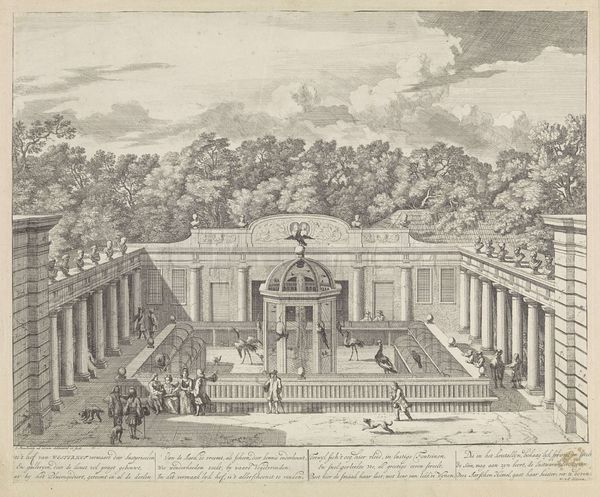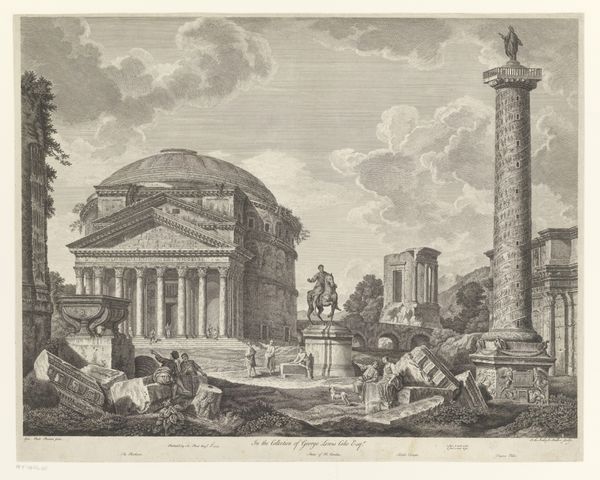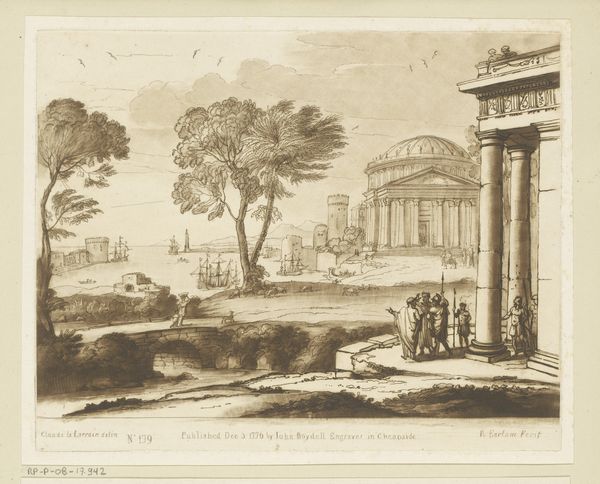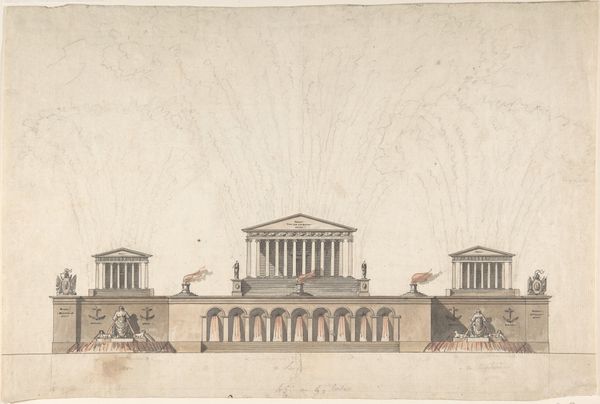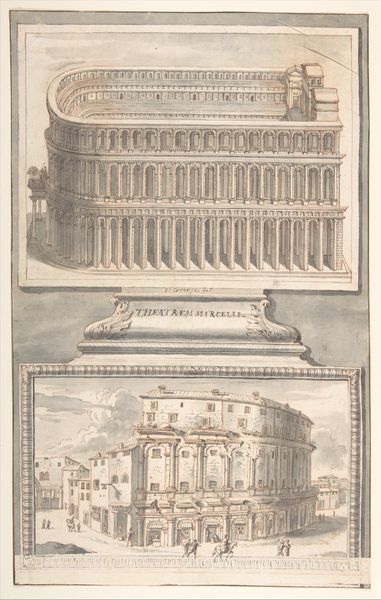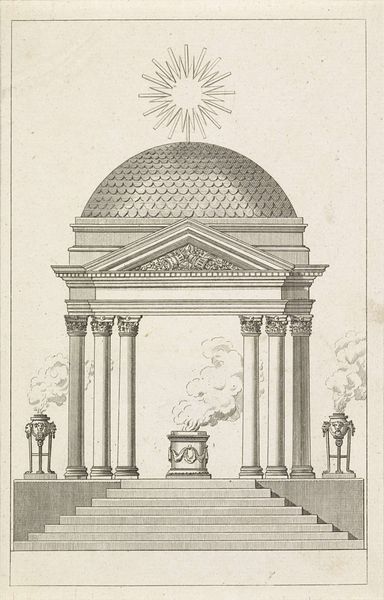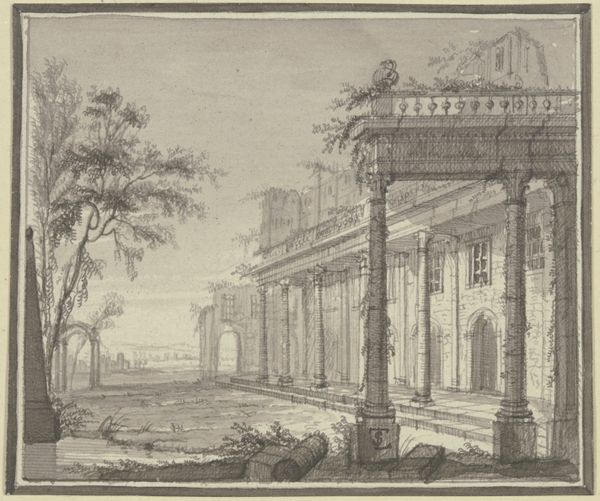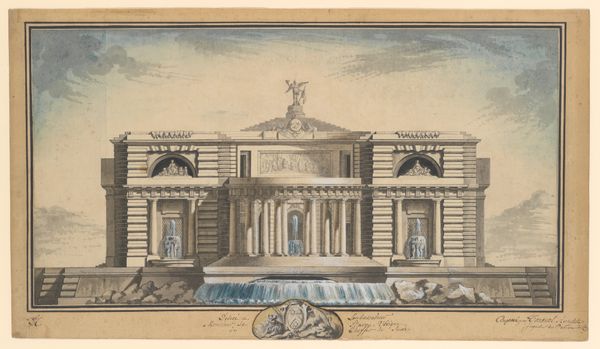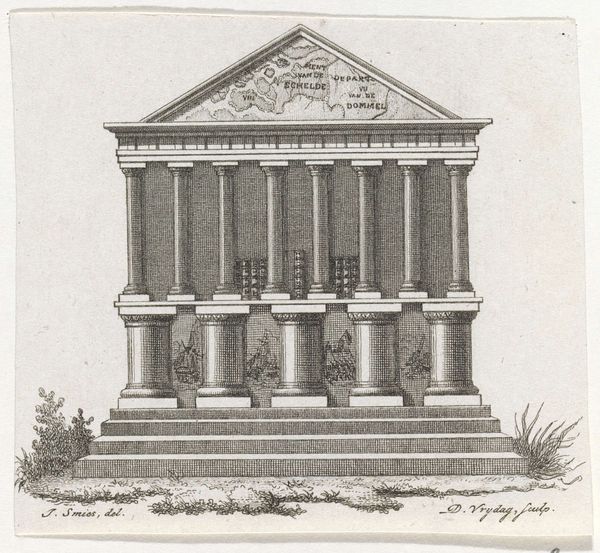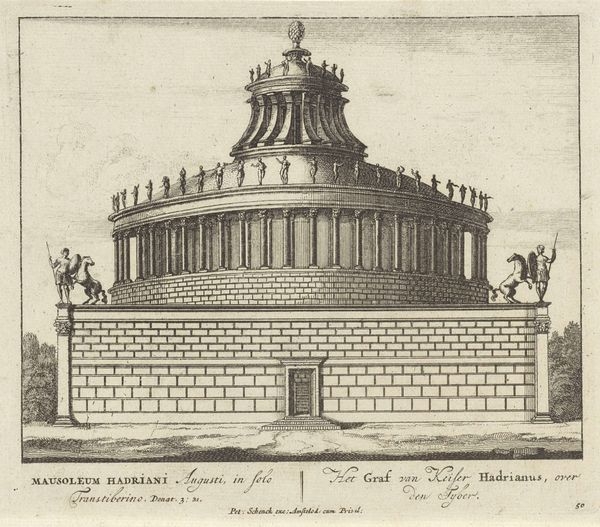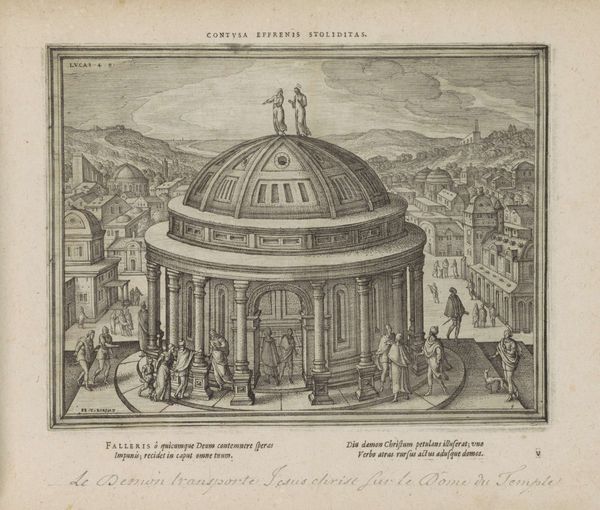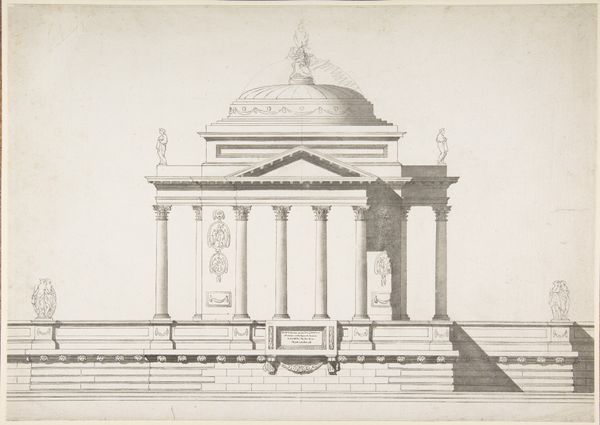
print, engraving, architecture
#
baroque
# print
#
line
#
cityscape
#
history-painting
#
engraving
#
architecture
Dimensions: plate: 40 x 47.7 cm (15 3/4 x 18 3/4 in.) sheet: 43.5 x 46.8 cm (17 1/8 x 18 7/16 in.)
Copyright: National Gallery of Art: CC0 1.0
Curator: What we have here is a baroque engraving from 1746 by Louis Joseph Le Lorrain. It’s titled "The Temple of Minerva, for the 'Chinea' Festival". The piece depicts an elaborate architectural structure dedicated to the Roman goddess Minerva, constructed as part of a festival. Editor: My first impression? Drama! Just look at the detail. It almost feels like the whole thing's about to launch into space or, you know, just dramatically burst into flames. And all that smoke and clouds. A bit much, perhaps? Curator: The "Chinea" was a festival held in Rome, an annual tribute paid by the Kingdom of Naples to the papacy. These temporary structures were expressions of political power, religious devotion, and artistic skill all rolled into one spectacle. They weren’t designed to last. Think of them more as ephemeral statements. Editor: That context is fascinating, knowing this elaborate thing was temporary. I feel a kind of tension between its intended magnificence, and its inevitable demise. It’s all very Baroque; over-the-top design communicating important cultural ideas. Like, the architectural precision, and the clean lines feel almost defiant against the encroaching puffs of what, I'm guessing is supposed to be clouds? Curator: The ephemeral nature was very much the point. Think of it as courtly love-- the expense was the message. These displays were created to convey power, prestige, and sophisticated artistic patronage of the patrons. Minerva as a subject aligns with enlightened concepts and aristocratic values. We must remember the context here is performance and assertion of papal authority through displays of wealth during festivals. Editor: Makes sense. I still love the dynamic interplay in the composition. You've got those perfectly spaced figures on the roof contrasted with the very turbulent smoke. I read it now almost as though someone is questioning that classic ideal they represent. Maybe even lampooning them, albeit politely. Curator: I see your point. The baroque, as you said, reveled in drama. Even excess and here, through the precise lines of the engraving, we can see how the art could underscore hierarchical relationships within society itself. Each temporary structure, by its sheer grandeur, upheld the standing order. Editor: So much thought, skill, and… fleeting glory! Well, it's still standing here in this engraving, and our impressions get to breathe new life into it now. It does strike me that even though these things have a grand socio-political goal, that they begin with individual human creators like you or me.
Comments
No comments
Be the first to comment and join the conversation on the ultimate creative platform.
